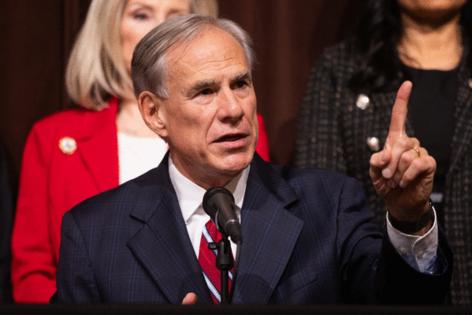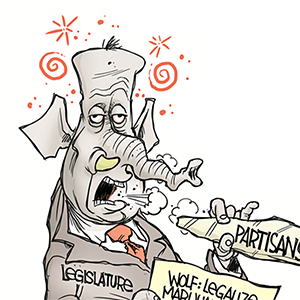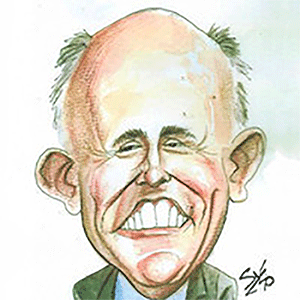In Texas case, it's politics vs. race at the Supreme Court, with control of Congress at stake
Published in News & Features
WASHINGTON — The Texas redistricting case now before the Supreme Court turns on a question that often divides judges: Were the voting districts drawn based on politics, or race?
The answer, likely to come in a few days, could shift five congressional seats and tip political control of the House of Representatives after next year's midterm elections.
Justice Samuel A. Alito, who oversees appeals from Texas, put a temporary hold on a judicial ruling that branded the newly drawn Texas voting map a "racial gerrymander."
The state's lawyers asked for a decision by Monday, noting that candidates have a Dec. 8 deadline to file for election.
They said the judges violated the so-called Purcell principle by making major changes in the election map "midway through the candidate filing period," and that alone calls for blocking it.
Texas Republicans have reason to be confident the court's conservative majority will side with them.
"We start with a presumption that the legislature acted in good faith," Alito wrote for a 6-3 majority last year in a South Carolina case.
That state's Republican lawmakers had moved tens of thousands of Black voters in or out of newly drawn congressional districts and said they did so not because of their race but because they were likely to vote as Democrats.
In 2019, the conservatives upheld partisan gerrymandering by a 5-4 vote, ruling that drawing election districts is a "political question" left to states and their lawmakers, not judges.
All the justices — conservative and liberal — say drawing districts based on the race of the voters violates the Constitution and its ban on racial discrimination. But the conservatives say it's hard to separate race from politics.
They also looked poised to restrict the reach of the Voting Rights Act in a pending case from Louisiana.
For decades, the civil rights law has sometimes required states to draw one or more districts that would give Black or Latino voters a fair chance to "elect representatives of their choice."
The Trump administration joined in support of Louisiana's Republicans in October and claimed the voting rights law has been "deployed as a form of electoral race-based affirmative action" that should be ended.
If so, election law experts warned that Republican-led states across the South could erase the districts of more than a dozen Black Democrats who serve in Congress.
The Texas mid-decade redistricting case did not look to trigger a major legal clash because the partisan motives were so obvious.
In July, President Donald Trump called for Texas Republicans to redraw the state map of 38 congressional districts in order to flip five seats to oust Democrats and replace them with Republicans.
At stake was control of the closely divided House after the 2026 midterm elections.
Gov. Greg Abbott agreed, and by the end of August, he signed into law a map with redrawn districts in and around Houston, Dallas, Fort Worth and San Antonio.
But last week federal judges, in a 2-1 decision, blocked the new map from taking effect, ruling that it appeared to be unconstitutional.
"The public perception of this case is that it's about politics," wrote U.S. District Judge Jeffrey V. Brown in the opening of a 160-page opinion. "To be sure, politics played a role" but "substantial evidence shows that Texas racially gerrymandered the 2025 map."
He said the strongest evidence came from Harmeet Dhillon, the Trump administration's top civil rights lawyer at the Justice Department. She had sent Abbott a letter on July 7 threatening legal action if the state did not dismantle four "coalition districts."
This term, which was unfamiliar to many, referred to districts where no racial or ethnic group had a majority. In one Houston district that was targeted, 45% of the eligible voters were Black and 25% were Latino. In a nearby district, 38% of voters were Black and 30% were Latino.
She said the Trump administration views these as "unconstitutional racial gerrymanders," citing a recent ruling by the conservative 5th Circuit Court.
The Texas governor then cited these "constitutional concerns raised by the U.S. Department of Justice" when he called for the special session of the Legislature to redraw the state map.
Voting rights advocates saw a violation.
"They said their aim was to get rid of the coalition districts. And to do so, they had to draw new districts along racial lines," said Chad Dunn, a Texas attorney and legal director of UCLA's Voting Rights Project.
Brown, a Trump appointee from Galveston, wrote that Dhillon was "clearly wrong" in believing these coalition districts were unconstitutional, and he said the state was wrong to rely on her advice as basis for redrawing its election map.
He was joined by a second district judge in putting the new map on hold and requiring the state to use the 2021 map that had been drawn by the same Texas Republicans.
The third judge on the panel was Jerry Smith, a Reagan appointee on the 5th Circuit Court, and he issued an angry 104-page dissent. Much of it was devoted to attacking Brown and liberals such as 95-year-old investor and philanthropist George Soros and California Gov. Gavin Newsom.
"In 37 years as a federal judge, I've served on hundreds of three-judge panels. This is the most blatant exercise of judicial activism that I have ever witnessed," Smith wrote. "The main winners from Judge Brown's opinion are George Soros and Gavin Newsom. The obvious losers are the People of Texas."
The "obvious reason for the 2025 redistricting, of course, is partisan gain," Smith wrote, adding that "Judge Brown commits grave error in concluding that the Texas Legislature is more bigoted than political."
Most federal cases go before a district judge, and they may be appealed first to a U.S. appeals court and then the Supreme Court.
Election-related cases are different. A three-judge panel weighs the facts and issues a ruling, which then goes directly to the Supreme Court to be affirmed or reversed.
Late Friday, Texas attorneys filed an emergency appeal and asked the justices to put on hold the decision by Brown.
The first paragraph of their 40-page appeal noted that Texas is not alone in pursuing a political advantage by redrawing its election maps.
"California is working to add more Democratic seats to its congressional delegation to offset the new Texas districts, despite Democrats already controlling 43 out of 52 of California's congressional seats," they said.
They argued that the "last-minute disruption to state election procedures — and resulting candidate and voter confusion —demonstrates" the need to block the lower court ruling.
Election law experts question that claim. "This is a problem of Texas' own making," said Justin Levitt, a professor at Loyola Law School in Los Angeles.
The state opted for a fast-track, mid-decade redistricting at the behest of Trump.
On Monday, Dunn, the Texas voting rights attorney, responded to the state's appeal and told the justices they should deny it.
"The election is over a year away. No one will be confused by using the map that has governed Texas' congressional elections for the past four years," he said.
"The governor of Texas called a special session to dismantle districts on account of their racial composition," he said, and the judges heard clear and detailed evidence that lawmakers did just that.
In recent election disputes, however, the court's conservatives have frequently invoked the Purcell principle to free states from new judicial rulings that came too close to the election.
Granting a stay would allow Texas to use its new GOP friendly map for the 2026 election.
The justices may then choose to hear arguments on the legal questions early next year.
©2025 Los Angeles Times. Visit at latimes.com. Distributed by Tribune Content Agency, LLC.







Comments